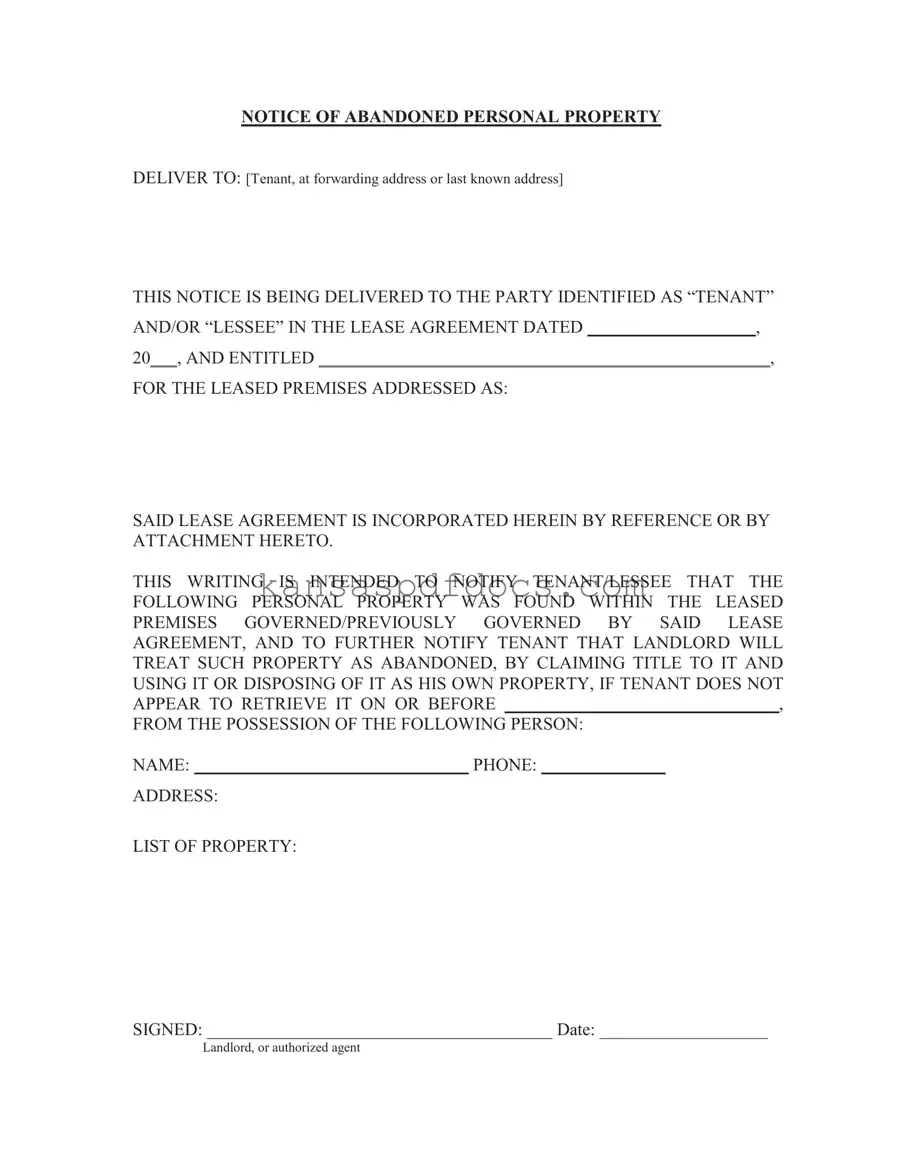Download Kansas Property Form
The Kansas Property form is a legal document used to notify tenants about abandoned personal property found within leased premises. This form informs the tenant of the landlord's intention to treat the property as abandoned if the tenant does not retrieve it by a specified date. It serves as a formal communication that outlines the responsibilities of both parties regarding the abandoned items.
Access This Form Now
